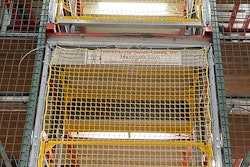
The 25 largest U.S. industrial markets — by inventory — represent 76% of the total U.S. industrial base among the 77 markets Colliers tracks, according to a recent Colliers report.
Ten of the biggest and oldest are in the Midwest, seven are in the South, six are in the West, and two are in the Northeast.
“These resilient markets often lead the way for the U.S., attracting institutional ownership, international and regional tenants, large-scale manufacturing campuses, and strong developer interest due to their size and influence on the regions they’re in,” according to the report.
Key takeaways:
- Record new supply has pushed vacancy higher in the Top 25 markets for the past eight consecutive quarters, by 202 basis points year-over-year, to 6.4%. 67% of the new supply received year-to-date was delivered in these core markets. Vacancy in the remaining 52 markets was slightly higher, at 6.6%.
- However, new supply has dropped by 18% year-over-year in the country’s largest markets after total space under construction was halved over the past year. This decline is outpacing the broader U.S. industrial market, indicating that the Top 25 U.S. industrial and logistics markets are poised for a faster recovery than others.
- While demand during the first half of 2024 is 55% below that in the same period last year, more than 70 new leases for 500,000 square feet or larger have been signed year-to-date, the majority in the Top 25 markets. This will translate to an uptick in demand during the second half of the year and into early 2025 as tenants occupy the space they leased.
- Rent growth has slowed following a period in which it exceeded 20% year-over-year, but continued to grow at a 5.3% annual rate in the top 25 markets during the second quarter.
- New supply totaled 243 million square feet nationwide during the first half of 2024. Construction completions have now eclipsed 100 million square feet for the past nine quarters in a row compared to an average of 65 million square feet per quarter prior to 2020.
- Vacancy rates have increased the most in markets where new supply has significantly outpaced demand. Phoenix, at 10.1%, had the greatest increase over the past year, up 651 basis points. The average increase over the past four quarters among the top 25 markets was 197 basis points. This increase was exceeded in another 11 markets, while vacancy decreased in only two — Cleveland and Detroit.




















